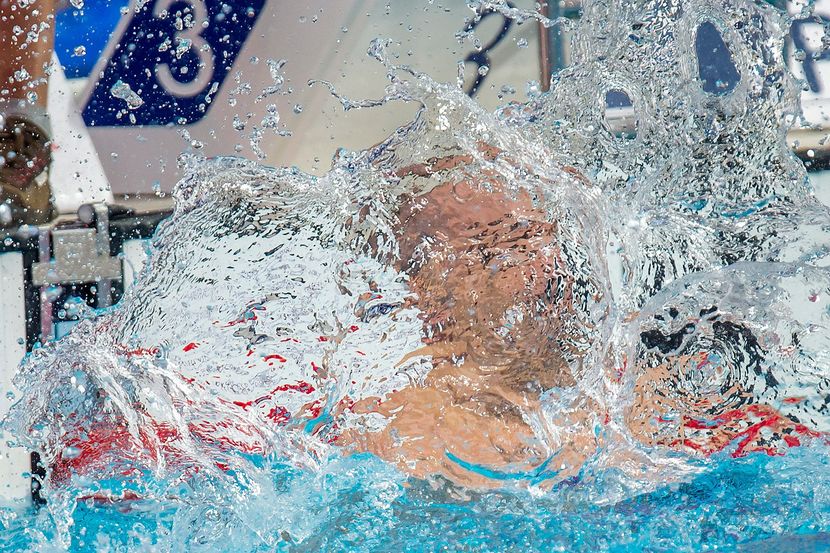
Born in August 1921 in California, three years before Johnny Weissmuller’s triple gold at the 1924 Olympics in Paris, her life and notoriety would be closely connected with Weissmuller career. Winner of two more gold medals in swimming at the 1928 Olympics in Amsterdam, Weissmuller was a great star in the USA, being the first man to swim the 100m free under the minute. In the 1930s, he switched to a career in the cinema industry, being the unforgettable protagonist of the “Tarzan” movies. In 1940, he was the biggest attraction of the “San Francisco Aquacade” show, a spectacle based in water choreographies.
The producer of this show, Bill Rose, was looking for a female counterpart for Weissmuller and thanks to her appearance in commercials and advertisements, Esther Williams’ perfect body (and swimming capacities) soon convinced Rose that she was suited for this role. In the Broadway production, with hundreds of swimmers and divers, singing and performing acrobatic movements in the water, Esther Williams was featured as Aquabelle n°1, while Weissmuller had the title of Aquadonis n°1.
Her abilities and natural sense of elegance were quickly remarked by the Hollywood producers, who invited Williams for her first of a long list of movie, “Personalities” (1942). In 1944, she gets a huge success with “Bathing Beauty”, considered by many as the ‘first swimming movie’ in the history. Williams was the protagonist and the production included a pool in the studios of MGM and special cameras to register the underwater movements. In that year, only the legendary “Gone with the Wind” was more successful in terms of spectators’ audience. She became known, within Hollywood’s sphere, as the “Million Dollar Mermaid”, a 1952 movie in which she had obviously the main role, and the title of her autobiography, published in 1999.
In a time that synchronised swimming rules were still not defined, Williams’ role in the promotion of “ornamental swimming” or “water ballet” was essential. In 1952, FINA adopted the first set of regulations and synchronised swimming appears for the first time in the official programme of a major competition, at the Pan-American Games in 1955 in Mexico. The success is enormous and without surprise the first edition of the FINA World Championships, in 1973, includes the three main events of the discipline, solo, duet, and team.
Curiously, synchronised swimming, also thanks to the positive and popular image given by Esther Williams, was a demonstration sport in the Olympics, from 1952 to 1968, but would make its official appearance in the programme at the 1984 edition in Los Angeles (USA) – by a coincidence in history, in the same region (California) in which Williams had featured her shows four decades before.
In 1966, she was honoured by the International Swimming Hall of Fame and she kept swimming and appearing in many social events throughout her long life. If Williams’ goal was simply to promote the values of health, fitness and sport through swimming, the display of this message in the many shows and movies in which she participated stayed associated to the development of synchronised swimming (graceful movements in the water, control of the underwater positions, sense of choreography associated with music, synchronisation with other swimmers, and all other basic aspects of this discipline).
Seventy years after Williams’ performances, synchro has enormously evolved but the seed of development can be found on the “San Francisco Aquacade” shows of the 1940s. Swimming lost a champion, but synchronised swimming won a star. A star with no medals, but with a lot of talent. Now, also a star in the sky.